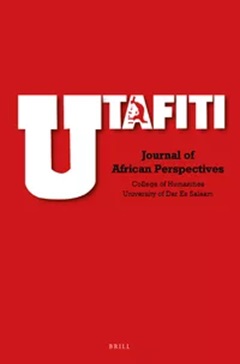DORO REKUFA AND TSVITSA: BEER, ANIMALS AND DEATH RITUALS AMONG THE NDAU OF SOUTH EASTERN ZIMBABWE
Abstract
Despite Westernization and particularly the advent of Christianity and its
widespread entrenchment on the African continent, traditional indigenous
rituals continue to constitute an integral part of African religious belief
systems and practices. This article presents the results of an ethnoarchaeological
study of two death rituals that are conducted by the Ndau
people of south eastern Zimbabwe. The rituals are a demonstration of
attitudes towards death and beliefs about the role of the dead among the
living. The Ndau do not believe that death signals and represents the end
of life. In the same vein and perhaps more importantly, the Ndau do not
believe that death just happens. It is caused by human agency out of
jealousies, hatred and conflict among the living. These beliefs are central
to the two rituals presented and discussed here: the first ritual is
conducted to ascertain cause of death and the second to bring back the
spirit of the deceased from a temporary state of limbo immediately after
death. Meat and beer are central to these rituals, firstly as offerings to the
deceased and secondly as an important part of the living celebration of the
rituals. The paper then explores some interpretive implications of the
rituals from an archaeological perspective.
References
Bannerman, J. H. 1981. A short political and economic history of the
Tsovani, Chisa and Mahenye dynasties of the Ndanga, Chiredzi
and Chipinga districts to ca 1950. Unpublished paper.
Binford, L. R. 1962. Archaeology as Anthropology. American Antiquity 28
(2): 21-225.
Binford, L. R. 1972. An Archaeological Perspective. New York. Seminar
Press.
Crellin, R. 2017. Changing Assemblages: Vibrant Matter in Burial
Assemblages. Cambridge Archaeological Journal 27(1): 111-125.
David, N and C, Kramer. 2001. Ethnoarchaeology in Action. Cambridge:
Cambridge University Press.
Dobres, M & Robb, J. (eds.) 2000. Agency in Archaeology. London:
Routledge.
Hamilakis, Y. and Jones, A. 2017. Archaeology and Assemblage.
Cambridge Archaeological Journal 27(1): 77-84.
O ' Shea, J. 1981. Social configuration and the archaeological study of
mortuary practices. In R.W. Chapman, I. Kinnes, and K. Ransborg
(eds.). The Archaeology of Death. Cambridge. Cambridge
University Press, pp. 39-52.
Plan Shenjere-Nyabezi
Oestigaard, T. 2004. Death in world religions: Human responses to the
inevitable. Bergen: Bric Press.
PatrÃcio, M. 2012. Living in the Mugano €“ the partitioned Ndau in the
Mozambique-Zimbabwe borderland. Paper presented at the 22nd
Annual Conference of The Association for the Study of Ethnicity &
Nationalism (ASEN) Nationalism, Ethnicity and Boundaries,
March 27-29.
Pwiti, G and Mahachi, G. 1991. Shona ethnography and the study of Iron
Age Zimbabwe burials: the significance of burial location.
Zimbabwea 3: 57-59.
Rennie, J. K. 1973. Christianity, colonialism, and the origins of
nationalism among the Ndau of southern Rhodesia 1890-
Unpublished PhD Thesis, Department of Anthropology,
Northwestern University.
Shenjere-Nyabezi, P. 2016. Doro reKufane Tsvitsa: Death, animals and
post-interment rituals among the Ndau of Chipinge, Zimbabwe.
Documentary. Harare: University of Zimbabwe.
Taggart, C. 1988. The Welstone Burial excavation. Zimbabwea 2:16-23.
Tainter, J. A. 1978. Mortuary practices and the study of prehistoric social
systems. In M. B. Schiffer (ed.) Advances in Archaeological
Method and Theory, Volume I. New York: Academic Press, pp.
-141.



